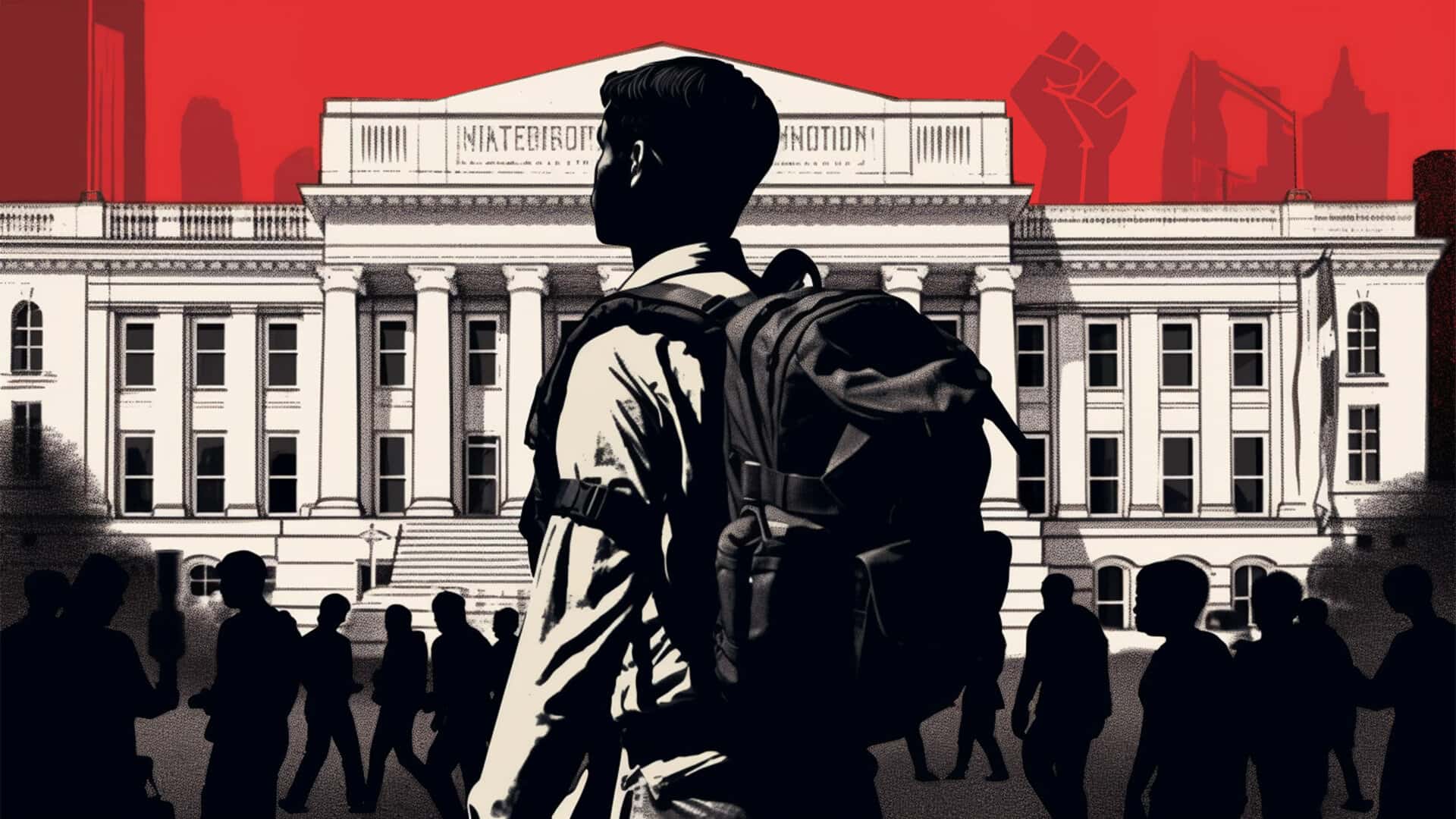It's difficult to imagine a time in our nation's history when public schools were not a behemoth institution dominating American life. Yet, before the 1830s, education was both a formal and informal institution organized by churches, guilds, and private individuals or organizations, as voluntary institutions seeking to cultivate a person's intellect and imagination for their own sake. Local governments would sometimes provide small, modest funding to schools. But the concept of public schools did not yet exist in either the United States or the rest of the Western world. History shows that people were well-educated before the creation of public schools and at a lower cost. Today, the average seventh-grader in public schools is reading and doing math at a second-grade level and at the cost of $11,298 per student in Idaho. Perhaps worse than declining test scores, political fights over what should be taught to children in schools have only increased as the public school system grows.
To understand why this is happening, citizens need to understand the real history of the public school system.
The creation of the public school system is strongly connected to an influx of largely Catholic and other non-Protestant immigrants to America. This influx of Catholic immigrants led to the construction of increasingly more Catholic-run schools. As more and more Catholic immigrants arrived in America, they desired funding to start more schools. This made Protestants begin to feel uneasy about the rise of a creed contrary to their own beliefs.
Enter the father of the Common School movement, Horace Mann. Mann was raised Calvinist but rejected his upbringing in favor of Unitarianism, a branch of Protestantism. Like the Protestants, Mann lamented that there had never been a Christian government on earth. He also desired to counter the predominant influence of other religions. Yet, during this time period, America was characterized by a general respect for religious tolerance. Instead of arguing for the unpopular idea of establishing a national religion, Mann began advocating for the Common Schools, or government-run schools, so that he could marginalize other religions in the minds of students. To gain support for the role of government in education, Mann argued that public education would provide non-denominational schools and therefore unite Americans and give them peace.
In 1837, Mann was instrumental in establishing the Massachusetts Board of Education. In his first annual report as Secretary of the Massachusetts Board of Education, he stated, "The tendency of the private school system is to assimilate our modes of education to those of England, where churchmen and dissenters, each sect according to its creed, maintain separate schools, in which children are taught, from their tenderest years to wield the sword of polemics with fatal dexterity, and where the gospel, instead of being a temple of peace, is converted into an armory of deadly weapons, for social, interminable warfare." He continued, "there is only one remedy for such interminable warfare"—the elevation of a centralized and controlled school system known as "the Common Schools." But these government-run Common Schools were far from Mann's non-denominational, peaceful promise. The school's instruction included singing of "Protestant hymns, pray[ing], and read[ing] the King James Bible."
In response to the early Common Schools movement, Catholics established the private parochial school system in 1874. At first, the Protestant teaching of the Common Schools led to Protestant communities supporting government-run schools. Supporters directly sought to keep Catholic ideology out of Common Schools and public funding away from Catholic schools. For a time, government regulation of Common Schools allowed Protestants to protect their market share in the education business. But, as history has taught us, Protestants would grow to despise the school system their ancestors established. After a series of cultural losses in the courts like the abolition of prayer in schools, the public school system eventually embraced anti-sectarian and anti-religious teaching, causing them to instruct students in a secular world view. This left a moral void in the schools, which education bureaucrats have sought to fill with new fads like social-emotional learning.
Although Common Schools began with religious motivation, government influence in the education industry was ultimately nothing more than an inefficient firm attempting to crowd out competitors. As time went on, the Common Schools movement gained new, secular leaders, which caused the schools to become more and more secularized. Similarly, in response to increased secular leadership in public schools, Protestants began starting their own private schools to protect their children from secular ideology.
As Mann's vision for the Common Schools spread across the country, the rise of secularism eventually led to States prohibiting the use of public funds to assist any church or religious activities related to education. By the beginning of the 1900s, 18 states had amended their constitutions to prohibit public funds for religiously affiliated private schools, and seven additional states had limited the use of school funds to public schools only. These became known as the Blaine Amendment and have been recognized by the Supreme Court as "being born of bigotry" and are unconstitutional under the Free Exercise clause.
Protestants initially supported Mann's drive to standardize curriculum and centralize the disbursement of taxpayer funds because they knew they would benefit from these policies. The influx of Catholic immigrants caused Protestants to begin losing their market share, and they did not want to compete with increasing numbers of Catholic schools. So, they turned to the government to restrict their competitors and protect their budgets.
Consider Idaho as an example. Common schools first began in Idaho through the Boise Charter, which originally passed in 1881, not long after the rise of Horace Mann's Common Schools. The charter provided that all kids between the ages of 6 and 21 have the right to attend school without charge (§ 27). Soon after, the government enforced compulsory attendance laws, and a new government bureaucracy was placed in charge of all aspects of school—bylaws, teacher employment, curriculum, furnishings, discipline, etc. (§ 28). Prior to this, families and individuals made these decisions about education for their children. The charter also provided that the school board trustees would have the power to "exclude from the schools and school libraries of said district all books, tracts, papers, or catechisms of a sectarian nature" (§ 28(11)). It also provided that trustees had the right to "protect the morals and health of the pupils while at school" (§28(13)) (excluding the teaching of religious morals). These provisions persist to this day throughout the various amendments of the charter. Districts across the state eventually adopted similar charters establishing local public schools.
At the time, spending per student, even when adjusting for inflation, was a small fraction of today's per-pupil spending. In 1959, for example, the cost per student was $250, or about $2,500 in today's dollars. Yet the cost per student today is about $11,000 in Idaho. The majority of students still cannot read, write, or do math at grade level. Yet public schools increasingly waste funds on training teachers to impart gender ideology to children and purchasing pornographic books for school libraries.
It is not surprising, then, that the Common Schools evolved into the monopoly the public school system is today. Mann had shifted education into the realm of government-protected industry. The consequences of government-enforced monopoly in education are the same as any other monopoly—higher costs and poorer quality products. Public schools can marginalize families' traditional religious values and instruct students in gender and race radicalism, while test scores decline because they enjoy the protection and ever-increasing taxpayer dollars afforded to them by their government-run monopoly.
Debates over what should be taught in schools are even more prevalent today than they were during the 1800s and 1900s. The costs of maintaining this government-run monopoly are also increasing every year, while student academic achievement decreases or remains stagnant. For years, Idaho policymakers have been fighting over forcing students into the homogenous public school system or allowing their parents to choose an alternative. The history of public schools teaches us that to end political fights and underperformance in the education system, the choice is obvious.




